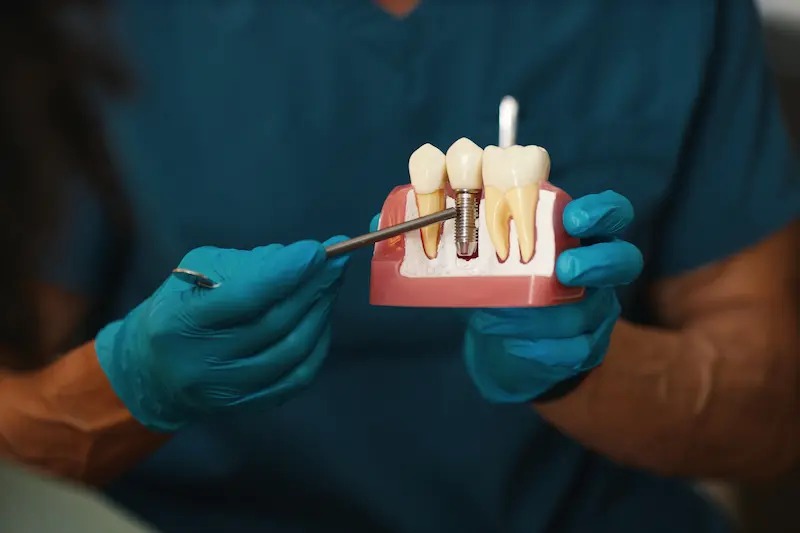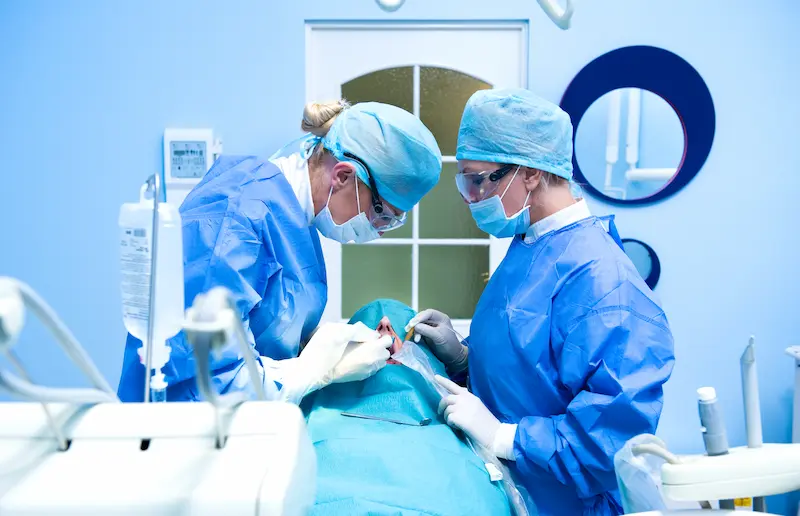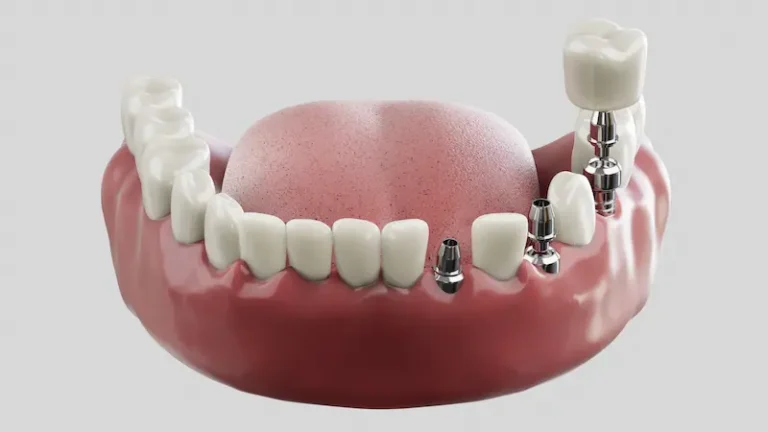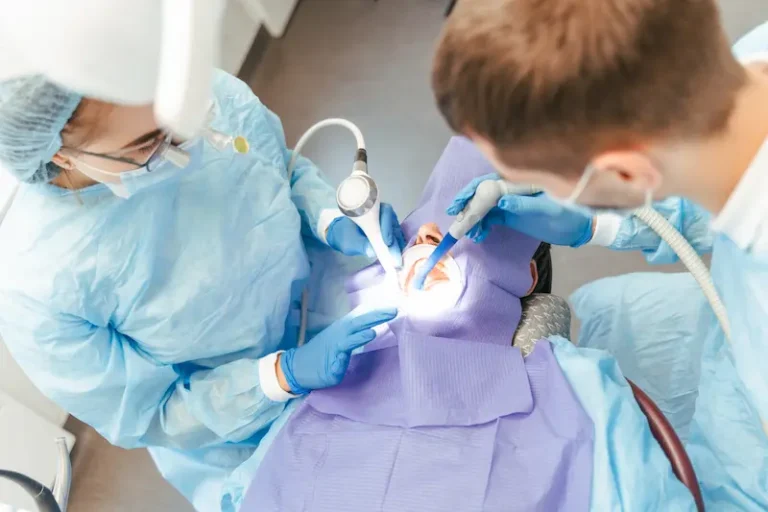When it comes to restoring your smile, dental implants offer a long-lasting and natural-looking solution for those who have lost one or more teeth. At The Foleck Center in Norfolk, VA, we specialize in implants for patients who are looking to regain their confidence and improve their overall oral health. Whether you’re considering a single implant or multiple, understanding the dental implant process can help you feel more at ease.
That’s why we want to walk you through the steps that you can expect, from the initial consultation on through the final restoration. Let’s explore how dental implants work, why they’re a great solution, and how they can help you achieve a healthier, more beautiful smile.
What Are Dental Implants?
Dental implants are artificial tooth roots that provide a sturdy foundation for replacement teeth. Unlike traditional dentures, dental implants are anchored directly into the jawbone, which means they look, feel, and function just like your natural teeth. They can also be permanent or removable.
Implants are composed of three main components:
- The implant post – A small titanium screw that serves as the tooth root.
- The abutment – A connector that holds the crown in place.
- The restoration – The final crown or bridge that replaces the missing tooth or teeth.
Because dental implants fuse with the bone (a process called osseointegration), they offer excellent stability and strength, making them the most durable option for tooth replacement.
Step 1: The Initial Consultation
The first step in the dental implant process is scheduling a consultation with our expert team. During your appointment, Dr. Foleck will conduct a comprehensive examination to assess your oral health and determine if you’re a good candidate for the implant process.
During this evaluation, you can expect:
- A Medical History Review. We’ll discuss your overall health, any medical conditions that you may have, and any medications you’re currently taking. This helps us ensure that dental implants are a safe and suitable option for you.
- X-rays and Imaging. Digital X-rays and 3D imaging allow us to evaluate the condition of your jawbone and the placement of the implant.
- Customized Treatment Plan. Based on your individual needs, we’ll outline a treatment plan that includes the placement of the implant, healing time, and final restoration.
The consultation is also an opportunity for you to ask any questions that you may have about the procedure, recovery, and long-term care so that you’re as prepared as possible for what’s involved.
Step 2: Implant Placement Surgery
If you’re a good candidate for implants, the next step in the dental implant process is the actual placement surgery. This is typically performed under local anesthesia to minimize pain and keep you comfortable.
During surgery, you can expect:
- Preparation. Our team will carefully clean the site where the implant will be placed, then numb it with anesthesia.
- The Implant Placement. Using precise techniques, Dr. Foleck will place the titanium implant into your jawbone. It will be carefully positioned to ensure proper alignment for the future restoration.
- Stitches and Healing. After the implant is placed, stitches may be used to close the gum tissue. The healing process typically takes a few months, as the implant fuses with the bone.
While the surgery itself typically takes about 1-2 hours, the healing period is crucial for the implant’s success. We highly encourage you to follow all post-surgery instructions, like avoiding hard foods and maintaining good oral hygiene.
Step 3: Healing and Osseointegration
After the implant is placed, your body will begin to heal through osseointegration. This can take several months (typically 3-6), depending on factors like your bone density and overall health.
During the healing period, you can expect:
- An Adjusted Diet. You may be advised to stick to a soft food diet and avoid putting pressure on the implant site.
- Follow-up Appointments. Our team will schedule visits to monitor your progress and make sure that the implant is integrating properly with your jawbone. X-rays and checkups will confirm that everything is on track.
- Temporary Restorations. In some cases, a temporary crown or bridge can be placed to restore the appearance of your smile while the implant is healing. This allows you to enjoy a more natural look during the healing process.
Osseointegration is crucial for the long-term success of the implant, so please follow the dentist’s instructions during this time.
Step 4: Attaching the Abutment
Once the implant has fully fused with the bone, the next step is to attach the abutment, the small connector that will hold your final restoration in place.
With the abutment, you can expect:
- Minor Surgery. In some cases, a minor procedure is needed to uncover the top of the implant and place the abutment. This is usually done under local anesthesia and is a relatively quick process.
- Healing Period. After the abutment is placed, there may be another brief healing period of a few weeks to allow your gums to adjust to the abutment.
During this phase, your dentist may take impressions of your teeth to ensure the proper fit of the final restoration.
Step 5: The Final Restoration (Crown, Bridge, or Denture)
The final step in the dental implant process is placing the restoration — the crown, bridge, or denture that will complete your smile. This restoration is custom-made to match the color, size, and shape of your natural teeth.
With restoration, you can expect:
- A Custom Design. Our team will take impressions and digital scans of your mouth to design a crown, bridge, or denture that fits comfortably and blends in with the rest of your teeth.
- A Fitting and Placement. Once your restoration is ready, we will place it over the abutment and make any necessary adjustments for a secure, comfortable fit.
Once the restoration is placed, you’ll be able to enjoy a fully functional and beautiful smile. You’ll notice that your new tooth or teeth feel like the real thing, allowing you to eat, speak, and smile with confidence.
Why Choose The Foleck Center for Dental Implants?
We’ve spent years helping patients in Norfolk and Hampton get the dental care that they need. We understand how frustrating it can feel to struggle with missing teeth or discomfort, and we’re committed to providing a dental implant process that restores not only your smile but also your confidence. We’re here to guide you so that your experience is as comfortable, efficient, and stress-free as possible.
Contact us today to schedule a consultation or learn more. 800-800-8000





